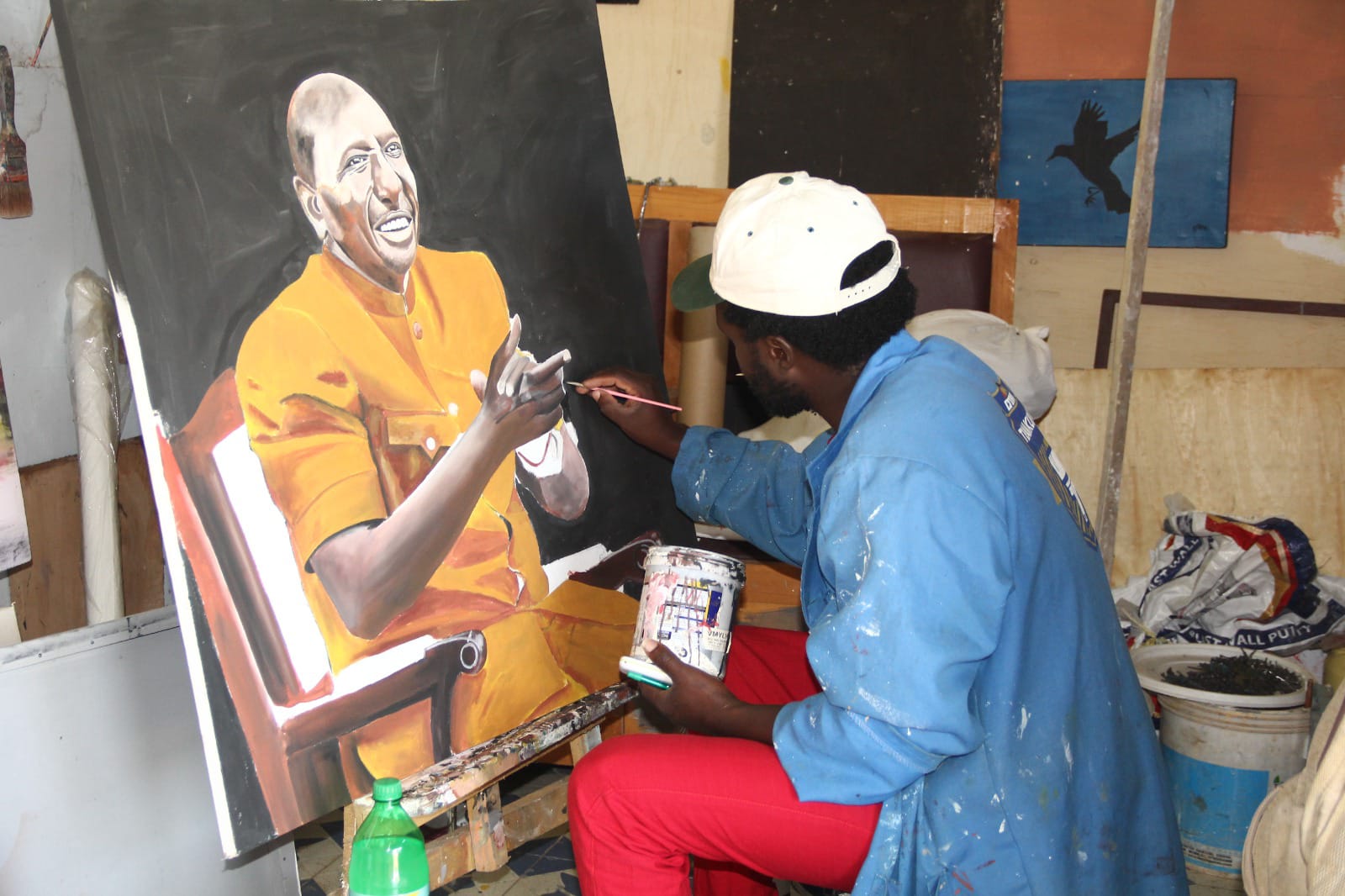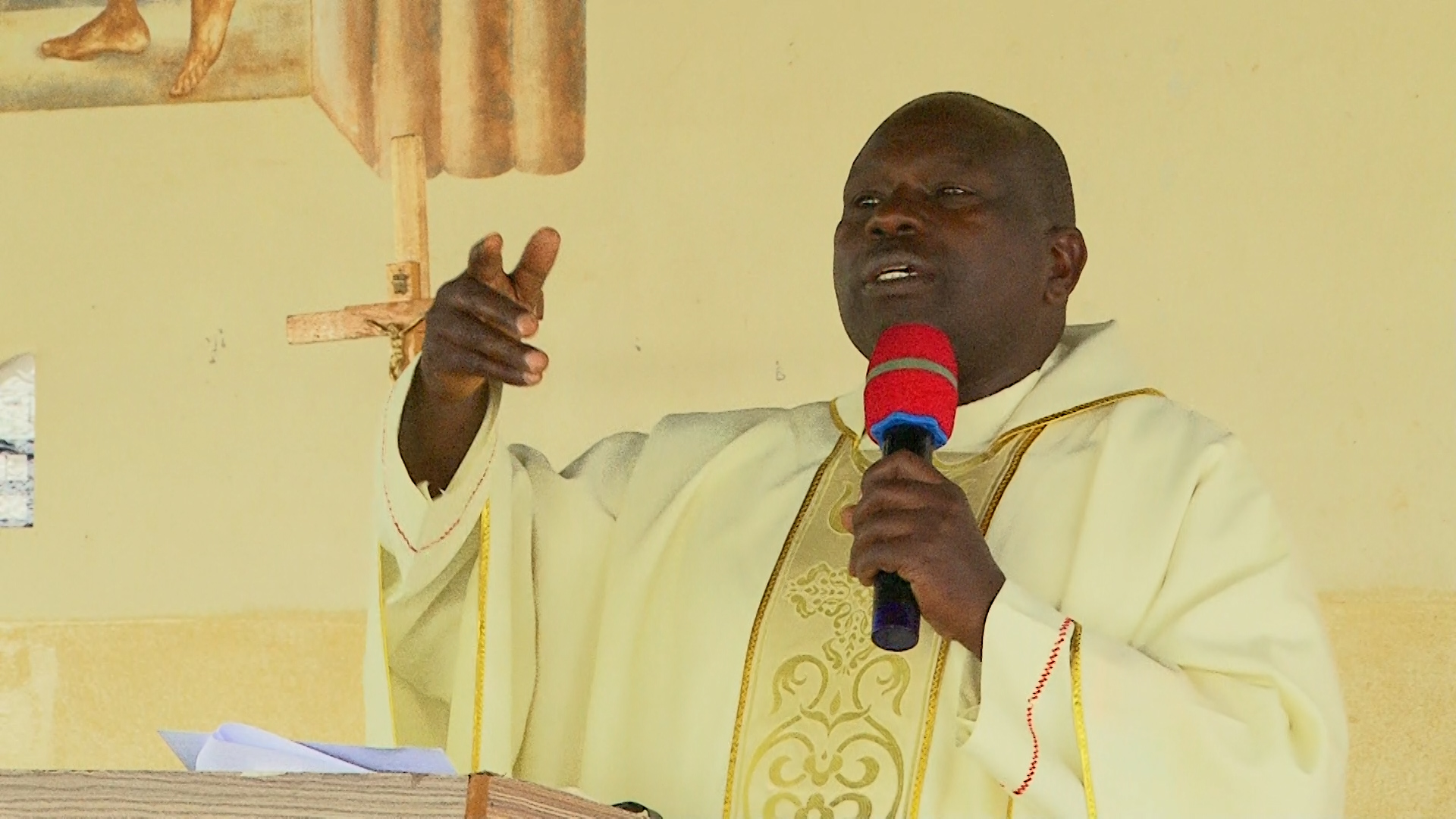Jerry Arts: From Struggles to Masterpieces

Amidst the bustle of university students rushing to their afternoon lessons, Robert Kilel sits engrossed in sketching an image at his shop overlooking the entrance of Bomet University.
Kilel, popularly known as Jerry Arts, has carved a niche for himself in the world of fine arts. I caught up with him at his shop—a small, unassuming house nestled at the end of a row of shops near a road junction. From a distance, its exterior might not seem extraordinary, but inside lies a hidden gem of artistic beauty. This is where Jerry creates his masterpieces.
As he ushers me into his studio, my eyes are immediately drawn to the breathtaking pieces of art adorning the walls. The vibrant images welcome visitors into the space Jerry has called home for the past five years.
One portrait in particular stands out—a striking image of President William Ruto. Though still a work in progress, the drawing on silk canvas is a testament to Jerry’s remarkable talent. His attention to detail is impeccable, and he reveals that this precision is what endears his work to customers.
"Over the years, I have perfected the art of drawing, and this has drawn many people to appreciate my work," he says with a broad smile.
The pieces hanging in his studio showcase incredible creativity, weaving together historical themes, wildlife, and portraits of influential individuals. Each artwork tells a story of dedication and passion—a reflection of Jerry’s journey as a developing artist.
"I enjoyed drawing since I was in primary school," he reminisces. "I would sketch from observation and pictures in gazettes, putting them onto paper. In high school, I participated in science congress competitions and would draw my projects, attracting fellow students who asked me to illustrate theirs. It’s something I truly love."
Raised by a supportive single mother in a challenging background, Jerry never imagined that art would become his lifelong pursuit. Initially, he enrolled in an electrical engineering course but had to drop out due to financial constraints. To sustain himself, he took up an odd job in the bodaboda transport business.
Yet, even amidst adversity, his passion for art never waned. Despite knowing that art could be lucrative, he initially sold his pieces at very low prices while living in Kericho, struggling to make ends meet.
Encouraged by his wife to pursue art professionally, Jerry took a leap of faith and ventured into the commercial side of his craft. However, success did not come overnight—he went a whole year without selling a single piece.
"This art reminds me that I can rise above life’s challenges. Many of my pieces represent my life, my society, my family, and emotions. Some artworks are so personal that I can't sell them, no matter how valuable they might be," he shares.
After relocating to Bomet County, Jerry continued to refine his artistry, working tirelessly day and night. He prefers working at night, finding that ideas flow more freely in the stillness.
"At night, my creativity peaks. Once I start sketching, a powerful curiosity takes over, compelling me to see the final outcome. It keeps me glued to my seat all night," he explains. However, he admits that he cannot focus on a single piece for too long. Whenever he grows tired of a project, he switches to another to refresh his mind.
As we converse, passersby peer into his shop, while young children step inside, marveling at the paintings. Their curious faces light up with questions—did he study for this level of artistry? He considers this curiosity a driving force behind his work, fueling his desire to keep creating art that captivates the world.
Jerry dreams of joining an art school to refine his skills further and elevate his career to greater heights. Through media exposure, he has built a network of friends who contribute ideas and inspiration to his work.
"You can never succeed alone. You need people. Most of my sales come from the network I’ve built with friends, family, and referrals. I thank God for such connections. If one embraces networking, it significantly boosts business. Keeping your art hidden will keep your work unrecognized and unproductive. Be bold and let the world see your creations—those are the same people who will promote your work," he advises.
When it comes to pricing, Jerry explains that size plays a crucial role. A larger canvas, around A3 size, can fetch him Ksh 30,000, while a standard A3 piece goes for approximately Ksh 20,000. His most expensive artwork has sold for close to Ksh 100,000, providing him with a steady income to support his family.
One of his most memorable moments was selling a painting to President William Ruto during a political rally. Recalling the experience, he describes standing near the president’s convoy, holding his artwork high above his head despite the intimidating security presence. To his astonishment, the president noticed him, called him over, and purchased the piece on the spot. The overwhelming joy made Jerry dash away from the crowd, clutching the cash tightly to avoid theft.
Now, with eleven years of commercial artistry under his belt, Jerry has no regrets about abandoning his engineering studies. Though the journey has had its challenges—particularly the high cost of materials such as brushes, paints, and canvases—his love for art outweighs every obstacle. He frequently travels to Nairobi to source quality supplies, but even this difficulty has not deterred him.
As he continues to grow, Jerry has become a beacon of hope for young, aspiring artists. He actively mentors budding talents and envisions opening his own art academy in the future.
"When there are events in my village, I take my paintings with me to encourage parents to support their children’s dreams. No child should be forced into a career they don’t love. Every child has talent, and if nurtured, it can change the world."
In the grand tapestry of life, art reminds us of beauty, resilience, and the light that shines through even the darkest moments. Jerry’s journey is an inspiration, urging us all to cultivate our creativity and recognize the transformative power of art in society.
As Nelson Mandela once said, "Does anybody really think that they didn’t get what they had because they didn’t have the talent or the strength or endurance or the commitment?"







Comments (0)
No comments yet. Be the first to comment!